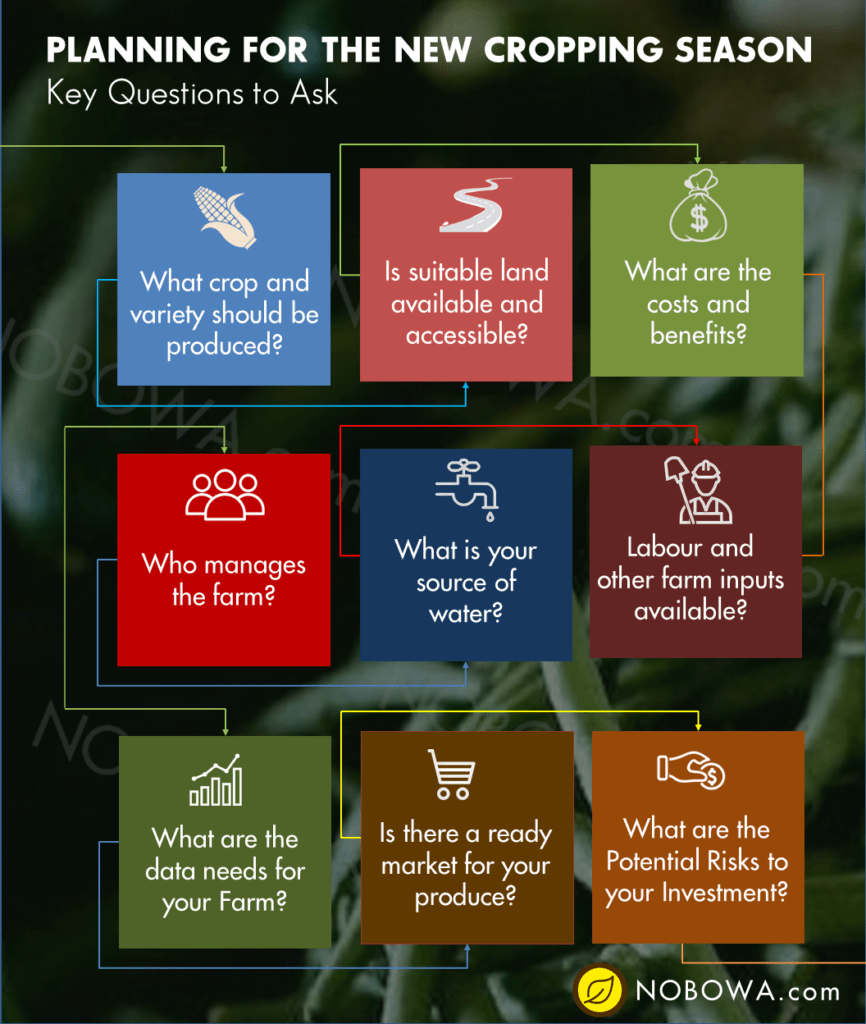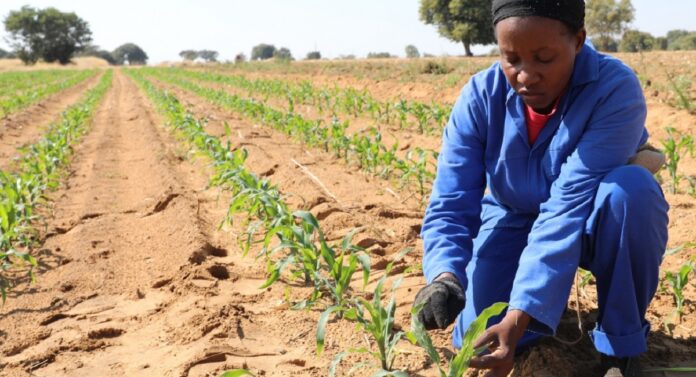Plan your crop farm very well. That comes before success.
As we approach a new year, a new planting season beckons for farmers and agriculture investors. Whether you are an experienced and successful farmer or a novice at crop farming, having a good plan prior to starting the season is the basis of whether or not you will be successful. Planning your crop farm is a critical stage in crop production.
Ideally, during the offseason for most crops, farmers should take time to reflect on the previous season. Review farm records on all activities and finances, which will help you make better decisions for the future.
For those of you who are hoping to venture into crop production for the first time, there is a need to make several key considerations during this planning stage to ensure success. Seek the help of experts, if necessary, for a more informed plan.
Today, we look at, some very key points you must consider while planning for your crop farm for the upcoming season. We have deliberately stated the most critical parts of the crop plan based on our experience working with farmers, farm establishments, and farm management.

1. What crop and variety should be produced?
The first thought during this stage will be a consideration of the type of crop and also the crop variety. The decision you make at this point is dependent on other considerations as you plan for your farm.
The choice of the crop depends on the cost of production, land suitability, marketability, management, input availability, and market access.
If you already have access to land, then, your choice of the crop will depend on the nature of the land, soil conditions, and even location.
If you are yet to acquire land, then, your preferred crop will determine where to find land and the soil conditions to look out for.
The cost of production differs from crop to crop. This is the stage to make that smart choice depending on how much money you are ready to invest in your crop farm.
Choose crops that are suitable for your ecological zone and varieties that are high yielding and can withstand hard weather, disease and pest conditions.
2. Is suitable land available and accessible?
Think of where to get suitable land for the selected crop and the available size that will help your commercial production based on your finances or your level of investment for the crop farm. Site selection is key because different crops do well in different soil types and conditions.
It is also important to consider soil tests on any land you have or acquire. The test will indicate the number of soil nutrients available for the plants. The test will help you know the quantity of fertilizer to apply and at what time.
Read also: Good Site Selection for Farming Purposes; 7 Master Keys
3. What are the costs and benefits?
If you are treating your crop farm as an investment and not just for subsistence, it is imperative that you have a financial plan that estimates your expenditure and projects your income over the farming season to be able to determine your expected return on investment (ROI) before spending your first cedi on the farm.
Is the production of the chosen crop profitable? This is a question you need to answer prior to commencing any activity on the farm.
It is an important question if you are treating the farm as a business. Here, you build your detailed budget and estimate the expected income to know if the venture is profitable.
Knowing the cost-benefits as you plan your crop farm will help you prepare financially. It will indicate the details of what goes into production to ensure the preferred outcome.
4. Who manages the farm?
The answer to this question is possibly the most important. Efficiency is increased with good management. If you are an absentee farmer, this critical decision determines the success or otherwise of your crop farm.
It is important you employ the services of people with expertise and commitment to manage your farm.
Read also: The Secret To Becoming A Successful Absentee Farmer
5. What is your source of water?
If you are likely to depend on rainfall, plan your crop farm to fall within the rainy season for optimum yields.
Using irrigation is the most guaranteed way to ensure a higher yield. Plan and put that in your cost.
6. Are labour and other farming inputs available?
There have been instances when there were fertilizer shortages in the country. This led to reduced yields in most crop fields.
Labour in either manual or mechanical forms must also be considered in your chosen location for your crop farm.
7. What are the data needs for your Farm?
In an era where data is considered one of the most valuable resources to any business operation, starting your crop farm without a plan on what data points you need to collect, how to collect the data, and how to analyse and manage the data for improved farm operations is a recipe for disaster.
This will give you a clear idea of what records you need to keep for your farm operations. Today, advanced farmers are employing precision farming by leveraging their farm data and automation to deliver key farm activities such as irrigation, fertiliser application, disease and pest control, and monitoring crop health to improve yields overall.
While your farm may not be at the level to employ such technology, it is important that as you plan your farm, you develop a basic data management plan to outline what financial and operational data you will need to collect for your farm operations and how this data will be collected, stored and managed.
Read also: 8 Most Important Farm Records; The Secret to Success of your Farm
8. Is there a ready market for your produce?
Until you sell and make money, you are not in business. Plan for where and how to sell your produce. Know and understand market avenues and pricing for the crop you intend to cultivate before you start your farm.
If you intend to keep your produce in storage after harvest for better prices in the future, have a plan to safely store your produce.
9. What are the Potential Risks to your Investment?
There is no such thing as a good plan without a risk assessment and risk mitigation measures. Identify all the potential risks to your crop farm. This could include risk in relation to poor seedlings, poor labour work, inconsistent rainfall for rainfed farming, shortage of fertiliser and other inputs, pests and diseases, post-harvest losses, and the glut in the market after harvest, thus impacting pricing.
Rank the identified risks from high, medium, to low based on the likelihood of their occurrence and the impact on your farm and investment should they occur.
Identifying the risks will help you develop and adopt risk mitigation strategies that will enable you to prevent the occurrence of the risks or reduce their impact if they occur.
In summary
Before you get to the field to produce, make sure you have made serious considerations to the points above.


